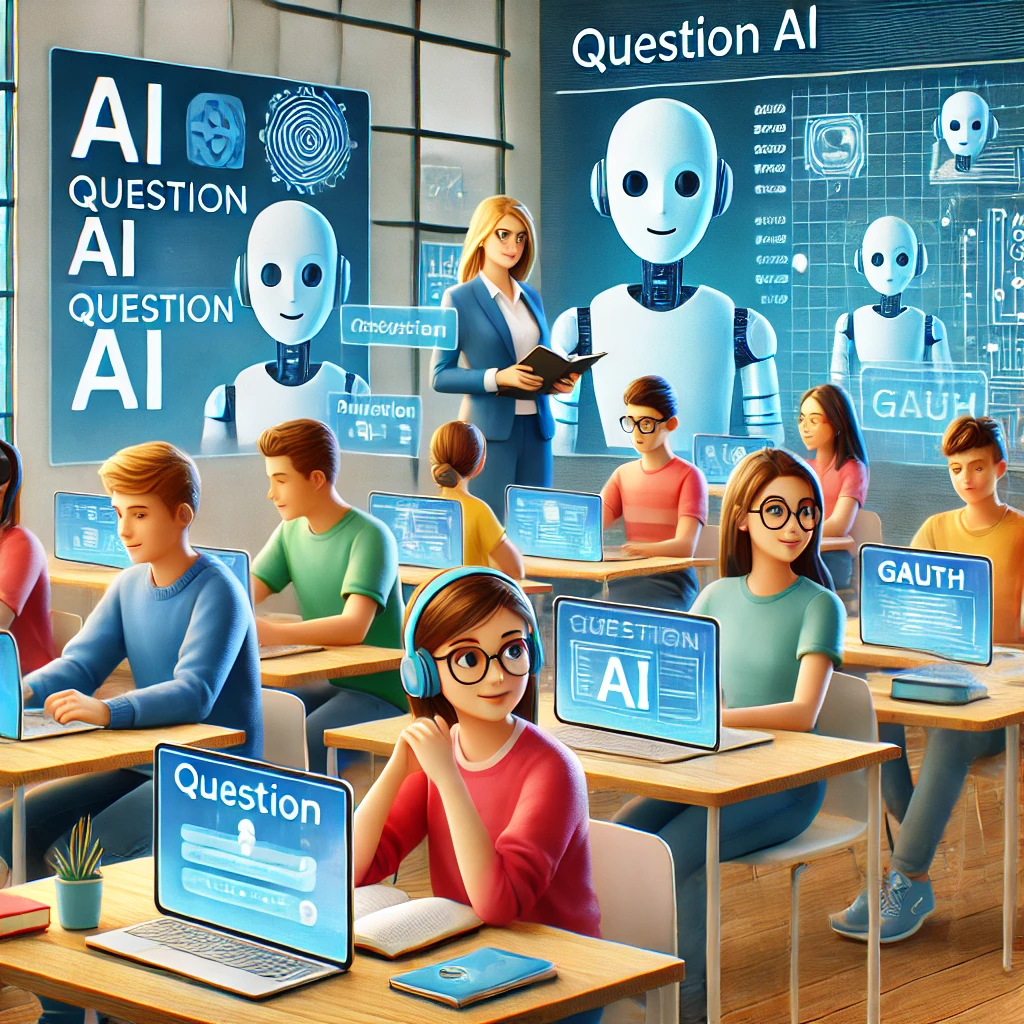Introduction
The integration of AI technology in education has sparked both excitement and concern among educators. Some educators believe the benefits of ChatGPT outweigh the risks and have embraced it in their classrooms. The use of ChatGPT, an advanced AI chatbot developed by OpenAI, is rapidly increasing in K-12 schools, offering innovative solutions for teaching and learning while also presenting unique challenges.
In this blog post, we will explore how ChatGPT is transforming education, its potential benefits, and the concerns it raises. We will also discuss how educators can effectively use AI tools, reimagine assignments, and maintain academic integrity. By examining scientific insights and expert opinions, we aim to provide a comprehensive understanding of the role of ChatGPT in modern education.
The Rise of ChatGPT in K-12 Education
Embracing AI in the Classroom
ChatGPT has the potential to improve education by revitalizing lesson plans and classroom instruction. Educators who have integrated ChatGPT into their teaching practices report increased student engagement and more dynamic lessons. The AI chatbot can generate creative ideas, provide instant feedback, and offer diverse perspectives on various topics, making lessons more interactive and enjoyable.
ChatGPT is being used by 51% of K-12 teachers, with 40% using it at least once a week. This widespread adoption highlights the growing recognition of AI’s potential to enhance educational quality. Teachers are leveraging ChatGPT to support their instructional strategies, from generating lesson plans to creating personalized learning experiences for students.
Enhancing Language Learning
The program can translate assignments into students’ native languages and simplify materials for new language learners. This feature is particularly beneficial in diverse classrooms where students may struggle with language barriers. By providing translations and simplified explanations, ChatGPT helps ensure that all students can access and understand the material.
Furthermore, ChatGPT can rewrite responses at different reading levels, making it easier to create different types of assignments. This adaptability allows educators to tailor their instruction to meet the needs of students with varying abilities, ensuring that each student can engage with the content at an appropriate level.
The Challenges of Integrating ChatGPT
Concerns About Misinformation and Bias
Concerns about ChatGPT include misinformation, biased responses, and making writing assignments more formulaic. While AI can offer valuable support, it is not infallible. ChatGPT, like other AI systems, can sometimes generate incorrect or biased information, which can mislead students if not carefully monitored. Educators must remain vigilant and verify the accuracy of the information provided by AI tools.
Moreover, the use of AI for writing assignments may lead to more formulaic responses, reducing students’ creativity and critical thinking skills. To mitigate this, teachers should use ChatGPT as a supplementary tool rather than a primary source of information, encouraging students to think independently and critically evaluate AI-generated content.
Addressing Academic Integrity
More than one-fourth of teachers have caught students cheating using ChatGPT. The ease with which students can generate text using AI raises significant concerns about academic integrity and plagiarism. To address this issue, educators must implement strategies to detect and prevent cheating.
Large school districts like Baltimore, Los Angeles, New York City, and Seattle have banned ChatGPT due to concerns about academic integrity. These bans reflect the challenges that schools face in balancing the benefits of AI with the need to maintain high standards of honesty and ethical behavior. However, outright bans may not be the most effective solution, as they can limit the potential benefits of AI in education.
Strategies for Effective Use of ChatGPT
Reimagining Assignments
Educators suggest reimagining assignments and teaching students how to use AI tools effectively. By designing assignments that require critical thinking, creativity, and original research, teachers can reduce the likelihood of students relying solely on AI for their work. For example, assignments that involve open-ended questions, project-based learning, and collaborative activities can encourage deeper engagement and independent thought.
Teaching students how to use AI tools responsibly is also crucial. Educators can provide guidelines on ethical AI use, emphasizing the importance of verifying information and acknowledging sources. By fostering digital literacy and ethical awareness, teachers can help students harness the benefits of AI while maintaining academic integrity.
Implementing AI Text Classifiers
OpenAI introduced an AI text classifier to combat cheating with ChatGPT in the classroom. This tool helps educators identify AI-generated text, making it easier to detect instances of cheating and plagiarism. By incorporating AI text classifiers into their assessment processes, teachers can uphold academic standards while still benefiting from the advantages of AI tools.
Additionally, educators can use AI text classifiers as a teaching tool to demonstrate the importance of originality and ethical behavior. By discussing the capabilities and limitations of these classifiers, teachers can raise awareness about the consequences of academic dishonesty and encourage students to produce genuine work.
The Future of ChatGPT in Education
Balancing Benefits and Risks
The integration of ChatGPT in K-12 education offers numerous benefits, but it also presents challenges that must be carefully managed. As AI technology continues to evolve, educators must strike a balance between leveraging its potential and addressing its limitations. This requires ongoing collaboration between teachers, administrators, policymakers, and AI developers to ensure that AI tools are used effectively and ethically.
Educators should stay informed about the latest advancements in AI and continuously evaluate the impact of these technologies on their teaching practices. By adopting a proactive and informed approach, schools can maximize the benefits of ChatGPT while minimizing potential risks.
Promoting Educational Quality
ChatGPT and other AI tools have the potential to enhance educational quality by providing personalized, accessible, and engaging learning experiences. By using AI to support diverse learning needs, educators can create more inclusive and effective classrooms. However, it is essential to prioritize the development of students’ critical thinking, creativity, and ethical awareness to ensure that AI complements, rather than compromises, educational quality.
As AI technology becomes increasingly integrated into education, it is crucial to maintain a focus on student learning and well-being. By fostering a culture of ethical AI use and promoting best practices, educators can help students navigate the complexities of the digital age and prepare them for future success.
Conclusion
The integration of ChatGPT in K-12 education offers significant potential benefits, including revitalizing lesson plans, enhancing language learning, and preparing students for technology-based careers. However, it also raises important concerns about misinformation, bias, academic integrity, and the potential for formulaic learning. By reimagining assignments, implementing AI text classifiers, and teaching students how to use AI tools responsibly, educators can harness the advantages of ChatGPT while addressing its challenges.
Balancing the benefits and risks of AI in education requires ongoing collaboration and a commitment to promoting educational quality. As we continue to explore the possibilities of AI, it is essential to prioritize ethical use and student learning to ensure that AI contributes positively to the future of education.


